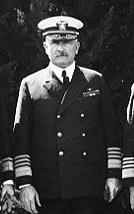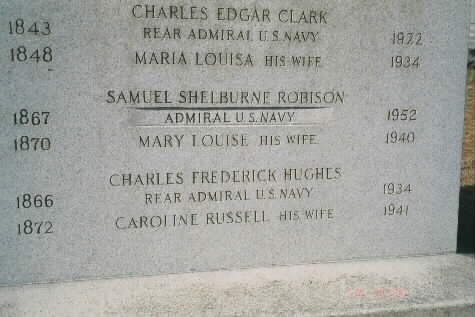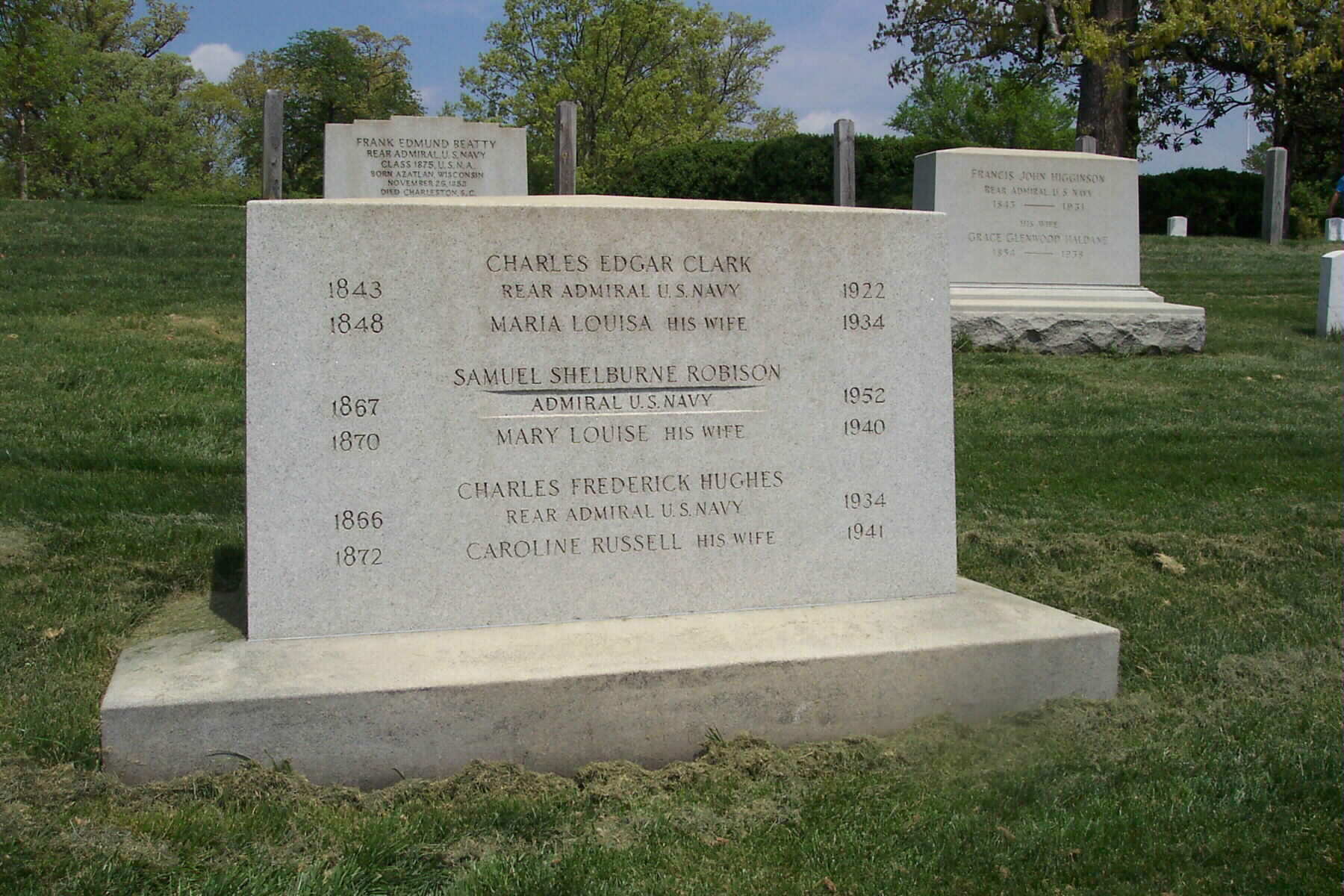Rear Admiral Samuel Shelburne Robison, USN (10 May 1867 – 20 November 1952) was a U.S. Navy officer whose service extended from the 1890s through the early 1930s. He held several major commands during World War I, and from 1928-1931 served as Superintendent of the United States Naval Academy.
Early life and career
Robison was born on 10 May 1867 in Juniata County, Pennsylvania. He entered the Naval Academy on 4 September 1884. After finishing his academic studies at Annapolis he served the two years at sea as a Passed Naval Cadet in USS Omaha on the Asiatic Station and was commissioned Ensign 1 July 1890.
In 1891 he was transferred to USS Boston, still on the Asiatic Station; and, from 1893, he served in USS Thetis until ordered to the Mare Island Navy Yard in 1895. In 1896 he returned to the Asiatic Station in Boston. In August 1899 he was assigned to the League Island Navy Yard, Philadelphia, Pennsylvania. He joined Alabama (BB-8) 15 September 1900, and two years later was transferred to Hull (DD-7), a torpedo boat destroyer. From September 1904 to July 1906, he served with the Bureau of Equipment at Washington, D.C., then he returned to sea, serving first in Tennessee (CA-10) and later in Pennsylvania (ACR-4).
After a tour of duty in the Bureau of Engineering, he assumed command of Cincinnati (C-7), a unit of the Asiatic Fleet, on 25 October 1911. Upon his return to the United States in April 1914, he became commanding officer of USS Jupiter (AC-3). He held the rank of Captain from 1 July 1914, and he remained with Jupiter until 8 August.
World War I service
On 12 October 1915 he assumed command of South Carolina (BB-26) and held that post until after the United States entered World War I. From July 1917 until September 1918, he commanded the Atlantic Submarine Force with additional duty as General Supervisor of all commissioned submarines in the Navy. For this duty he was awarded the Navy Cross. He was also made a Companion of the Order of the Bath for service to the British during the war.
In October 1918 he assumed command of Squadron 3, Patrol Force, and during the next month had additional duty as District Commander, Brest, France. In November, he was appointed U.S. Naval Representative on the Commission for executing the Naval Terms of the Armistice with Germany. After his return to the United States in March 1919, he commanded the Boston Navy Yard. In May 1921, he was sent to Santo Domingo as Military Governor.
Post-war service and retirement
A member of the General Board of the Navy from December 1922 until June 1923, he was appointed Commander in Chief, Battle Fleet, with the rank of admiral, from 30 June 1923. With Seattle (CA-11) as his flagship, he commanded the U.S. Fleet during the year commencing August 1925. He then became Commandant of the 13th Naval District with the permanent rank of rear admiral. From June 1928 until his retirement in June 1931, he served as Superintendent of the Naval Academy.
For a number of years after his retirement, Admiral Robison was Superintendent of the Admiral Farragut Academy, Toms River, New Jersey. He died in Glendale, California, on 20 November 1952.
Born at Juanita County, Pennsylvania, May 10, 1867, he graduated from the United States Naval Academy in 1888. He married Mary Louise Clark (daughter of Admiral Charles E. Clark) in 1898.
He was commissioned an Ensign in 1890 and advanced through the grades to Rear Admiral in 1918. He served in the USS Boston during the Spanish-American War, 1898; in the Bureau of Equipment, 1904-06; as Navigator, USS Tennessee, 1906-08; Executive Officer of the USS Pennsylvania, 1908-09; with the Bureau of Equipment, 1909-10; the Bureau of Steam Engineering, 1910-11; commended the USS Cincinnati, 1911-12; Assistant to the Chief, Bureau of Steam Engineering, 1913-14 and 1914-15; commanded the USS Jupiter, 1914; commanded the USS South Carolina, 1915-17; commanded the Submarine Forces, Atlantic Fleet, 1917-18; member, Naval Armistice Commission, 1918-19; commanded the Navy Yard, Boston, 1919-21; Military Governor of Santo Domingo, 1921-22; Member, Navy General Board, 1923; Admiral in Command, Battle Fleet, 1923-25; in command of the US Fleet, 1925-26; commanded the 13th Naval District, 1926-28; Superintendent, United States Naval Academy, 1928.
He retired from the Navy in 1931 and thereafter was the Superintendent, Admiral Farragut Academy, Toms River, New Jersey. He was the author of “History of Naval Tactics,” 1942.
He is buried in the Clark gravesite in Section 2 of Arlington National Cemetery along with Admiral Clark and his brother-in-law, Charles Frederick Hughes, Admiral, United States Navy.
ROBISON, SAMUEL SHELBURNE
- ADMR USN
- DATE OF BIRTH: 05/10/1867
- DATE OF DEATH: 11/20/1952
- BURIED AT: SECTION 2 SITE 892 WH
ARLINGTON NATIONAL CEMETERY
ROBISON, MARY LOUISA W/O SAMUEL SHELBURNE
- DATE OF DEATH: 08/27/1940
- BURIED AT: SECTION EAST SITE 892
ARLINGTON NATIONAL CEMETERY
Michael Robert Patterson was born in Arlington and is the son of a former officer of the US Army. So it was no wonder that sooner or later his interests drew him to American history and especially to American military history. Many of his articles can be found on renowned portals like the New York Times, Washingtonpost or Wikipedia.
Reviewed by: Michael Howard



